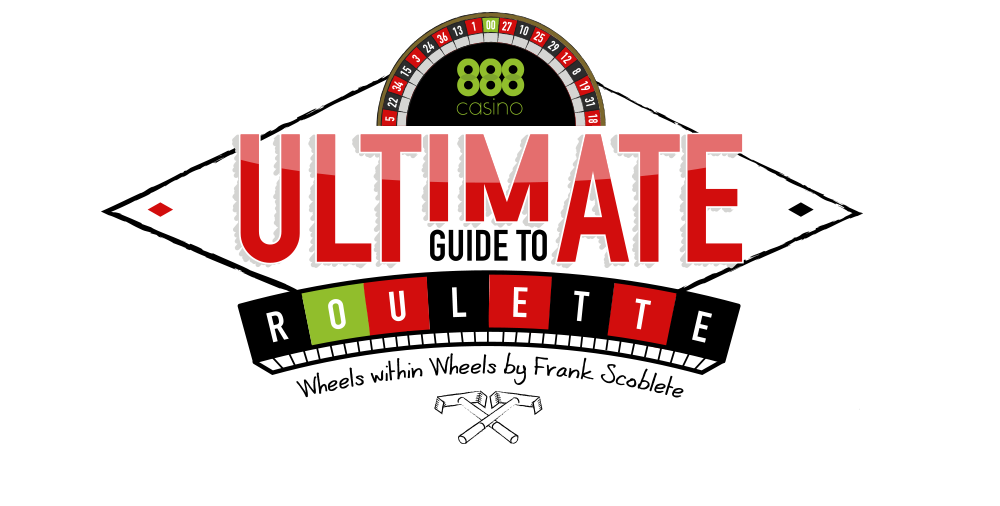

ROULETTE ODDS
| American Roulette Bets | Payout | Odds |
|---|---|---|
| Even | 1:1 | 46.37% |
| Odd | 1:1 | 46.37% |
| Red | 1:1 | 46.37% |
| Black | 1:1 | 46.37% |
| 1-18 | 1:1 | 46.37% |
| 19-36 | 1:1 | 46.37% |
| 1-12 | 2:1 | 31.58% |
| 13-24 | 2:1 | 31.58% |
| 25-36 | 2:1 | 31.58% |
| Single Number | 35:1 | 2.63% |
| Combination of 2 Numbers | 17:1 | 5.26% |
| Combination of 3 Numbers | 11:1 | 7.89% |
| Combination of 4 Numbers | 8:1 | 10.53% |
| Combination of 6 Numbers | 5:1 | 15.79% |
| Combination of 0, 00, 1, 2, 3 | 6:1 | 13.16% |
| European Roulette Bets | Payout | Odds |
|---|---|---|
| Even | 1:1 | 48.6% |
| Odd | 1:1 | 48.6% |
| Red | 1:1 | 48.6% |
| Black | 1:1 | 48.6% |
| 1-18 | 1:1 | 48.6% |
| 19-36 | 1:1 | 48.6% |
| 1-12 | 2:1 | 32.4% |
| 13-24 | 2:1 | 32.4% |
| 25-36 | 2:1 | 32.4% |
| Single Number | 35:1 | 2.7% |
| Combination of 2 Numbers | 17:1 | 5.4% |
| Combination of 3 Numbers | 11:1 | 8.1% |
| Combination of 4 Numbers | 8:1 | 10.8% |
| Combination of 6 Numbers | 5:1 | 16.2% |
I am fascinated by a certain mindset that exists in many casino gamblers. That mindset concerns the fact that many casino players will play games not possessing any idea of what those games’ house edges are or, if they do know the edges, they have no idea what those edges mean in terms of money (won or lost). They have no idea what those roulette odds actually are or how they relate to roulette’s probabilities.

THE ROULETTE HOUSE EDGE
Let me take a simple example first: What is the basic house edge at roulette (yes, both the American double-zero wheel version and the European single-zero wheel version) and how does that basic edge translate into roulette odds?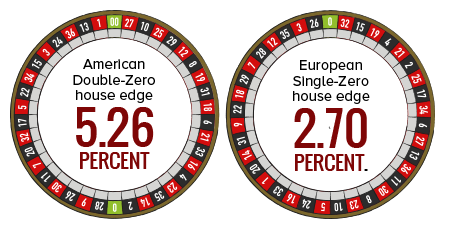
Now the above information is not startling and it is easy to remember but here comes the big question: How do those edges figure into roulette’s probabilities and then how do those probabilities figure into the roulette odds of both games?

ROULETTE PROBABILITIES
Yes, here is where many casino and Internet online casino players fall down – or (horrible though this sounds) express little interest in the answer. (“Just give me my chips, bub, so I can bet up a storm and enough with the math of the game. I failed math in fifth grade and I am not going to look back!”)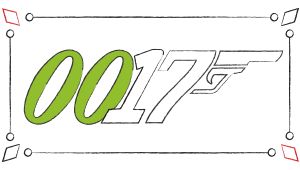
With 38 total numbers a bet on 17 is a wager on one number out of 38. That’s the probability, 1 in 38. So you bet it and 17 has one chance in 38 of coming up. That one in 38 is not the odds of the bet.

ROULETTE ODDS - AMERICAN DOUBLE ZERO WHEEL
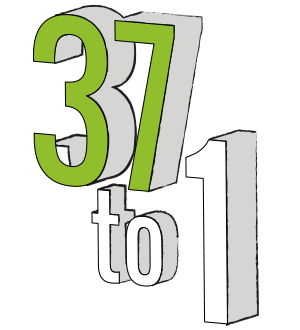
So the probability is one in how many total numbers exist (one in 38 for American double-zero roulette) but the odds deal with how often you are expected to win (once) and how often you are expected to lose (37).
How does that translate into money? Simply put, realize that the payoff for a winner is not the 37 to one roulette odds, as it would be in a “fair” game, but rather 35 to one. The casino shorts you two units (the casino couldn’t make any money if it paid “fair” odds and that would end the life of casinos around the world, something I am guessing we wouldn’t want). Divide 2 into 38 and then times 100 and like magic the house edge is 5.26 percent (or to be more precise 5.2631578 percent – feel free to memorize this number).
Bottom line: The roulette odds are not in league with the actual payouts.

ROULETTE ODDS- THE EUROPEAN SINGLE-ZERO WHEEL
The same holds true for the European single-zero wheel. On this wheel we have 37 numbers, one through 36 and a single 0. The probability of a hit is one in 37. The roulette odds are therefore 36 to one.Unfortunately, the European single-zero wheels also pay back 35 to one on a win, which means a shortage of one unit. The true odds are 36 to one; the payout is 35 to one.
Now we just divide that one by 37 anf then times 100 and we get the house edge for European single-zero wheels, 2.70 percent (or to be more precise 2.7027027 percent).

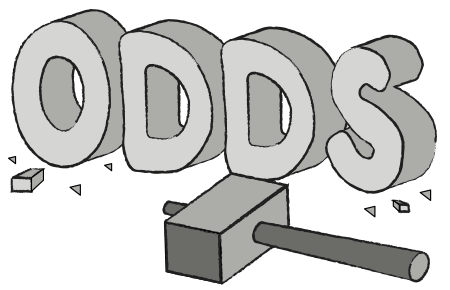
ARE THE ROULETTE ODDS LOCKED IN STONE?
We do have to take a close look at another factor when we discuss roulette probabilities and roulette odds. The fact that the odds are 37 to one on the American double-zero wheels and 36 to one on the European single-zero wheels does not mean that on every 38 or every 37 spins a winner will occur for you. Gamblers wish that were so but it isn’t.The roulette odds are just that, odds, a long-range figure based on math. In the short run the game of roulette (or any casino game) can be totally crazy; as in you may hit many winners or you may hit few or no winners in dozens upon dozens of decisions. You may find yourself wallowing in a massive losing streak or cheering like a wild man and strutting through the casino like a god who has brought down Lady Luck with a wild streak of wins. Who knows?

TIME AND ROULETTE ODDS
Still, as time passes inexorably forward and a roulette player plays more and more decisions, the roulette odds begin to take shape in the real world. It will never be exact but the wins and losses will be close to the math.Is there a way to play the short-run different from the long run? No, the roulette odds and probabilities are the same no matter whether you are playing one spin or thousands of them. This is another factor some roulette players overlook as many of them think they can out-think the math. I can’t. You can’t. They can’t.

ROULETTE ODDS ON PROPOSITION BETS
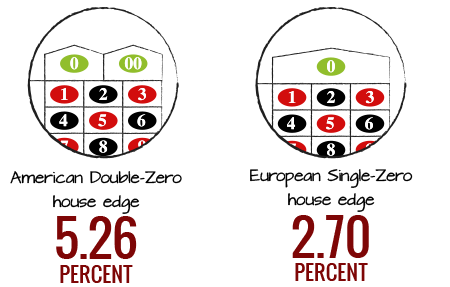
Let us say you bet red. There are 18 red numbers and 18 black numbers. You want red to hit; you don’t want black to hit. However (and this is the BIG however) you also don’t want the 0 or, on the American wheel, the 00 to hit. Those are also losing bets.
Here are the odds: You will win 18 times and lose 20 times on the American double-zero wheels. You will win 18 times and lose 19 times on the European single-zero wheels.
So what are the roulette odds here? They are 20 to 18 (or 10 to 9) on the double-zero wheels and 19 to 18 on the European single-zero wheels. Since the payout is one-to-one, the American wheel shorts you two units, which means 38 into 2 shows the edge to be 5.26 percent; while the European single-zero wheels show the edge to be 2.70 percent.
There are some other bets that come in with greater or lesser house edges. These were covered in other sections.

